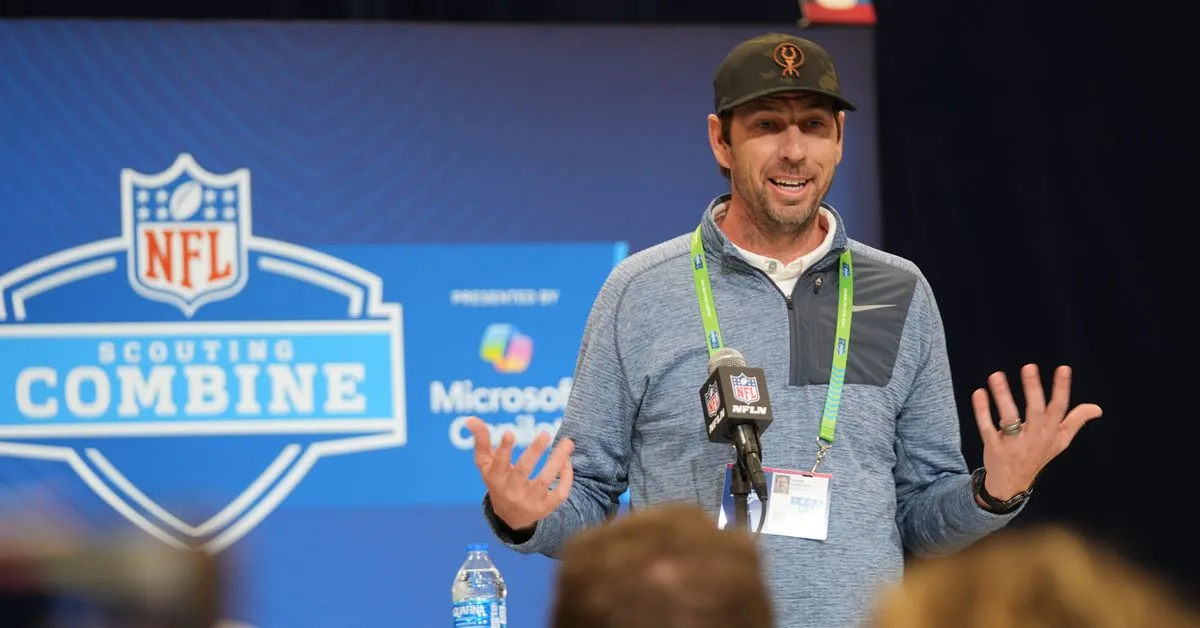
This week is a unique blend of excitement and anticipation for NFL fans, especially with the NFL Draft just around the corner. On one hand, the prospect of new talent joining teams is thrilling; however, once the draft concludes, the wait for the next game feels interminable. As we savor the final moments leading up to this significant event, let’s delve into the Indianapolis Colts' potential draft strategies and needs.
For the past two draft seasons, it has been clear that the Colts could benefit from a solid tight end. In 2023, acquiring a tight end felt like a helpful addition, but by 2024, it has become essential. However, while many anticipate the selection of players like Loveland or Warren, it is important to approach this with caution. The Colts are likely to pursue a tight end, but nothing is set in stone. This perspective is not a new narrative; I have been discussing it for over a month.
When analyzing the Colts’ roster comprehensively, it becomes evident that they cannot afford to focus solely on one position in the first round. I concur with Chris Ballard’s assessment that tight ends who can block are far more valuable than those who are merely oversized receivers. The lack of a blocking tight end can severely hamper the run game, which is non-negotiable in their offensive scheme.
With the current depth at wide receiver, the Colts aim to utilize 11 personnel (1 RB, 1 TE, 3 WR) frequently. Although Mo Alie-Cox and Drew Ogletree provide some flexibility, their performance has tipped the scale too far towards blocking, leading to minimal receiving output. This has allowed defenses to employ Cover 2 on passing downs, effectively neutralizing the passing game and limiting big plays from players like Alec Pierce. Thus, the Colts require a tight end capable of excelling in both blocking and receiving roles.
In this regard, Warren appears to align more closely with what the Colts need. He brings a physical presence to the field, capable of displacing linemen and creating run lanes. His ability to excel in the red zone, where the Colts have struggled recently, makes him a valuable asset. Warren’s strength at the catch point and ability to turn short receptions into significant yardage make him a prime candidate for the Colts' offense.
On the other hand, Loveland is undoubtedly talented, but I question whether the Colts' system is suited to develop him into the elite player many envision. His strengths lie in flexing out wide and running routes typically reserved for receivers. While he can block in-line, his effectiveness at this role may not meet the Colts’ current needs. The Colts’ offensive schemes do not frequently utilize formations that would allow Loveland to maximize his potential, which raises concerns about selecting him at 14.
Last year, the Colts traded up to select tackle Matt Goncalves in the third round, and his positional flexibility was a topic of excitement. However, a year later, it appears the coaching staff is hesitant to use him at guard due to his significant improvement over Blake Freeland at swing tackle. Shifting Goncalves to guard would not only complicate his development but also create a hole at swing tackle in a draft class lacking depth at that position.
Given the current landscape, it is evident that the Colts need to focus on acquiring a guard during Day 2 of the draft, as they currently lack a solid plan for this position. This necessity may prompt them to consider players like Grey Zabel or even tackle-converts such as Kelvin Banks, especially with many teams needing guards behind them.
The Colts' defensive line, once a strength heading into last year's training camp, now presents uncertainties. With only Laiatu Latu under contract beyond this season, the need for depth is critical. Transitioning from the Gus Bradley defense to a more controlled, gap-focused defensive style necessitates additional size and talent in the trenches.
The recent signing of Neville Gallimore indicates the type of depth players the Colts are pursuing. While Buckner and Stewart provide a strong foundation, the Colts must add at least two to three new faces to Coach Partridge’s defensive line to ensure a robust front moving forward.
When discussing potential linebacker options, Jihaad Campbell has been mentioned frequently. However, the Colts have a proven track record of drafting and developing off-ball linebackers in later rounds. With several talented players available early in the draft, the Colts may prioritize addressing more pressing needs before considering a linebacker selection.
As for the quarterback position, it is widely anticipated that the Colts will select a quarterback at some point during the draft. Whether this occurs in the first round or later rounds remains to be seen. A mid-round quarterback like Kyle McCord could be an intriguing option. His journey from Ohio State to Syracuse showcases his resilience and talent, making him a player to watch as the draft unfolds.
In conclusion, whether it’s Warren, Loveland, or another prospect, the Colts have several exciting options to consider. However, the most pressing need continues to be strengthening the trenches on both sides of the ball. Teams that consistently invest in their offensive and defensive lines are often the ones that achieve sustained success in the NFL.